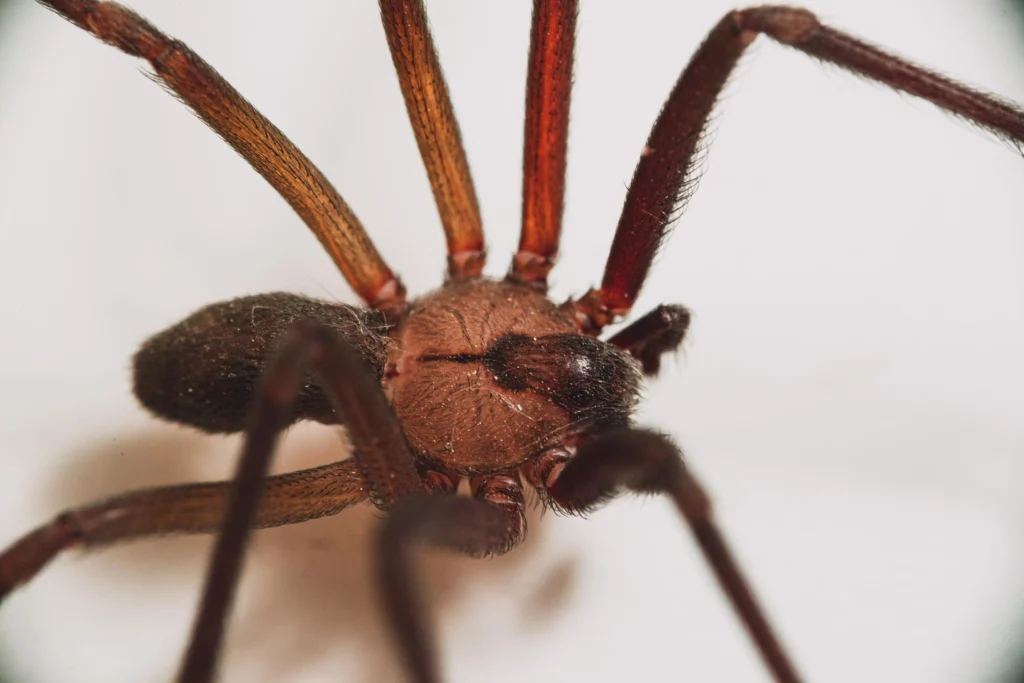The Brown Recluse Spider
This is a brown recluse (Loxosceles reclusa). I’ve been on the lookout for one of these for a long time so I can take photos and spread some knowledge. The first thing I’d like to talk about is identification since many other spiders are often misidentified as a brown recluse.
Their most known trait is the violin shape on their back. I made sure to get good photos that highlight this feature. As you can see, the “body” of the violin is widest on the thorax and tapers to a “neck” pointed toward the abdomen.

The next trait is the amount of eyes. These have six eyes in three sets of two. They are arranged horizontally across the head with a pair in the middle and another pair on each side. However, you have to get kind of close to see those so I would not recommend it unless you are experienced and/or taking proper precautions.
“Precautions? Why”, you might ask. They are venomous. Their venom is hemotoxic, which basically means it destroys red blood cells. It can cause necrosis (rotting flesh) and in rare cases a systemic infection. People often self-diagnose other infections (like MRSA) for a recluse bite. This isn’t meant to scare you, just to make sure you respect what they are capable of but understand this: like most spiders, they are not aggressive.
In my research, I found an article noting that their fangs are no longer than a no. 10 staple is thick. That’s really small, and they shouldn’t be able to puncture most clothing. In that same article, they could not elicit a bite by touching its legs, underside, or anywhere on its body. The only time a bite was elicited was with pressure – the feeling of being squashed… In which case, can you really blame it for biting?
They are one of three spiders in North America that can deliver a medically significant bite. Let that sink in for a moment, then consider that they only account for about 0.03% of the 3000+ spiders described in North America.
In conclusion, I just wanted to spread a little information about them and provide some detailed photos to help with identification for those that haven’t seen one or seen a good example of one. Be careful if you must handle one. Hope this info helps someone!
